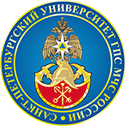In work the perkolyation model of distribution of oil products in the soil is considered. It is shown that at hit to the soil of alien oil product gradual transition of elements of soil structure from an unoccupied state to the filled begins. At achievement of a threshold of a perkolyation there is a carrying-out cluster in the direction of course. Thus properties of system change jump. At pollution of soils by oil products the structured disperse systems having the nanostructural organization are formed. The macromolecular structure of soil gels is formed by silicates and aluminosilicates, and liquid hydrocarbons can be the dispersive environment. The perkolyation model allows to describe critical processes of transition zol-gel in soil structures
soil, soil colloids, perkolyation theory, oil pollution
1. Antipov-Karataev I.N. Uchenie o pochve kak polidispersnoy sisteme i ego razvitie v SSSR za 25 let (1917-1942) // Pochvovedenie. 1943. № 6. S. 3-26.
2. Kryukov P.A. Gornye, pochvennye i ilovye rastvory. Novosibirsk: Nauka SO AN SSSR, 1971. 220 s.
3. Metodicheskoe rukovodstvo po izucheniyu pochvennoy struktury / pod red. I.B. Revuta i A.A. Rode. L.: Kolos, 1969. 528 s.
4. Fedotov G.N. Gelevye struktury v pochvah: dis. … d-ra biol. nauk. M., 2006. 355 s.
5. V Mire Nauki: suschestvuet li v pochvah nanostrukturnaya organizaciya? // Nanometr: nanotehnologicheskoe soobschestvo. URL: http://nanometer.ru›2009/05/28/pochva_155675.html (data obrascheniya: 01.03.2014).
6. Sel'sko-hozyaystvennyy enciklopedicheskiy slovar'. M.: Sovetskaya enciklopediya, 1989.
7. Voyuckiy S.S. Kurs kolloidnoy himii. M., 1975. 481 s.
8. Fedotov G.N. [i dr.]. Issledovanie nanostrukturnoy organizacii pochvennyh geley // Lesnoy vestnik. 2010. № 3. S. 212-222.
9. Sergeev G.B. Nanohimiya. M.: Mosk. gos. un-t, 2003. 288 s.
10. Fedotov G.N. Obrazovanie kolloidnyh chastic kak obyazatel'naya stadiya fazovyh prevrascheniy veschestv // Lesnoy vestnik. 2004. № 1.
11. Svergun D.I., Feygin L.A. Rentgenovskoe i neytronnoe malouglovoe rasseyanie. M., 1986.
12. Fedotov G.N. Mikrofaznoe rassloenie suprapolimernoy gumusovoy matricy kak process, formiruyuschiy nanostrukturnuyu organizaciyu pochv // Nanotehnologicheskoe obschestvo Rossii. URL: http://www.rusnor.org/nanoworld (data obrascheniya: 28.01.2014).
13. Fedotov G.N., Karpachevskiy L.O., Pozdnyakov A.I. Organomineral'nye geli v pochvah // Ekologicheskoe pochvovedenie. M.: GEOS, 2005. S. 180-183.
14. Fedotov G.N., Shalaev V.S. Prichiny vozniknoveniya nanostruktur v polimer-soderzhaschih sistemah: ucheb. posobie. M.: Mosk. gos. un-t lesa, 2010. 83 s.
15. Vinogradov D.V., Porshnev S.V. Geometricheskaya model' fazovyh perehodov (zadacha o perkolyacii) // Exponenta.ru: obrazovatel'nyy matematicheskiy sayt. URL: http://www.exponenta.ru/educat/systemat/porshnev/perokol/main.asp (data obrascheniya: 29.02.2014).
16. Tarasevich Yu.Yu. Perkolyaciya: teoriya, prilozheniya, algoritmy: ucheb. posobie. M: URSS, 2002. 112 s.
17. Efros A.L. Fizika i geometriya besporyadka // Bibliotechka «Kvant». Vyp. 19. M.: Nauka, 1982. 265 s.





